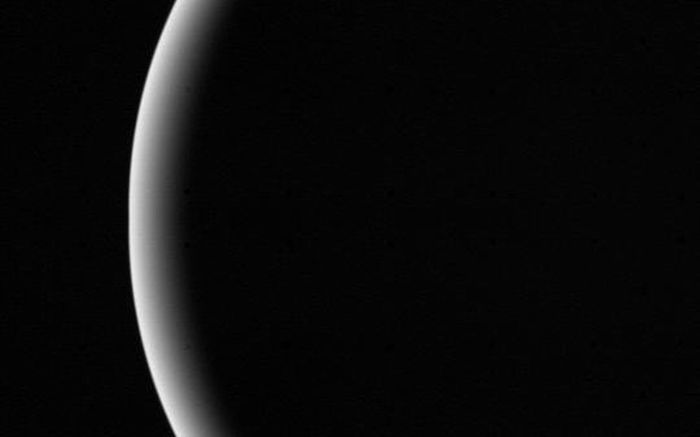
We’re really getting far away from the sun now as our exploration takes us to Uranus. Uranus is the first planet to have been discovered in relatively modern times with a telescope. It was discovered by William Hershel in 1781 who at first thought he had discovered a comet.
Uranus is the ancient deity God of the sky Ouranos, in Greek mythology. Father of Cronos (Saturn) and grandfather of Zeus (Jupiter).
Uranus is composed of an icy / metallic core and a helium / hydrogen atmosphere. The exact composition is not exactly known, but between 9 x and 13 x Earth’s mass makes up it’s core, the little remaining mass is it’s atmosphere.
Facts about Uranus
Moons
Uranus has 27 known moons, the 5 main moons are:
Miranda
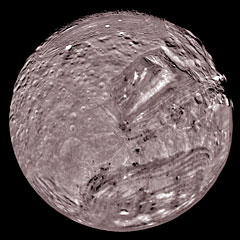
Named after Shakespeare’s character in the tempest, it was discovered in 1948 by Gerard Kuiper. At 470km it’s the smallest known object to be spherical under it’s own gravity. It’s tidally locked to Uranus so only one side ever faces it.
It’s surface is one of the most diverse in the solar system, this was discovered in the 1986 Voyager 2 flyby. It’s been suggested that this is due to internal heating from Miranda’s interaction with the other nearby moons.
Ariel
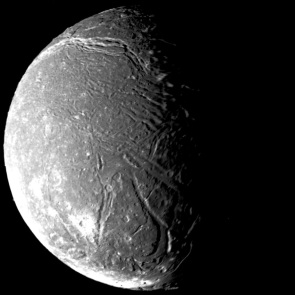
Discovered in 1851 by William Lassell, Ariel is named after two characters in literature. Composed mainly of rock and ice Ariel is 1,150km across. Several different terrain types have been identified on Ariel, Ridged, cratered and plains, each of these giving clues to the age of the different terrains and how the moon was formed.
Umbriel

Umbriel was also discovered in 1851 by William Lassell, named after a character in the poem The Rape of the Lock by Alexander pope. Umbriel is the darkest Uranus’s moons, again it’s made of rock and ice, it’s the most heavily impacted of the moons and this has a lot to do with how the surface was made. At 1,160km wide it’s Uranus’s third largest moon and the third furthest from Uranus.
Titania
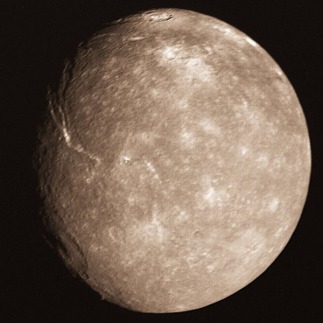
Titania was discovered in 1787 by William Herschel, is named after the queen of the fairies in A Midsummer Nights Dream. Titania is the largest of Uranus’s moons at 1,578km and the 8th largest in the solar system. Titania’s surface seems relatively less damaged by craters, this could be due to a surface melting that occurred, obliterating the old surface.
Oberon
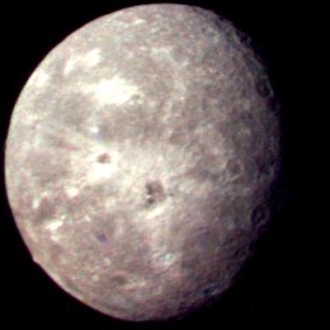
Titania was discovered in 1787 by William Herschel, is named after the king of the fairies in A Midsummer Nights Dream. Oberon is 1,522km in diameter, the second largest of Uranus’s moons, it’s heavily cratered with an apparent slight red tint. Like all the other moons, it’s made mainly of rock and ice and is the furthers from Uranus.
Rings
Uranus has rings, like all the outer planets. They were discovered from Earth in an unusual way though. An airborne telescope flying over the pacific was using Uranus occultation of a star to make observations of it’s atmosphere. When the signal started dipping they thought that instrument faults had ruined their data.

It was only after comparing the data before and after the occultation that they realised the ring dips were symmetrical – that had found the rings of Uranus.
Inspiration
The piece that Holst composed for Uranus is unusual to me, I’m not sure what the images were in his mind when it was written. But nonetheless, like a magician it didn’t give up it’s secrets easily and still doesn’t.
Recent Events
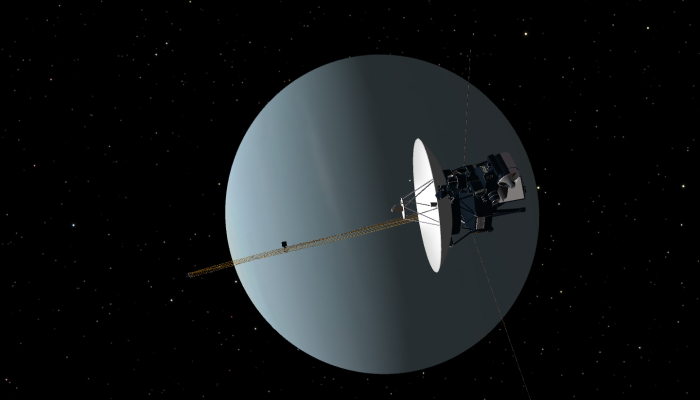
Voyager 2 is to date the only human space craft to have visited Uranus. It flew past the planet in 1986, using the planet’s gravity to guide it towards it’s final destination of Neptune.
On it’s approach to Uranus the scientist were expecting to be able to see more detail in the atmosphere as the probe approached. Even at a close distance Uranus’s atmosphere is virtually featureless. Only a few storms at very close range yielded any detail.

This was the view of the planet on it’s approach, the rings were not visible as they are faint.
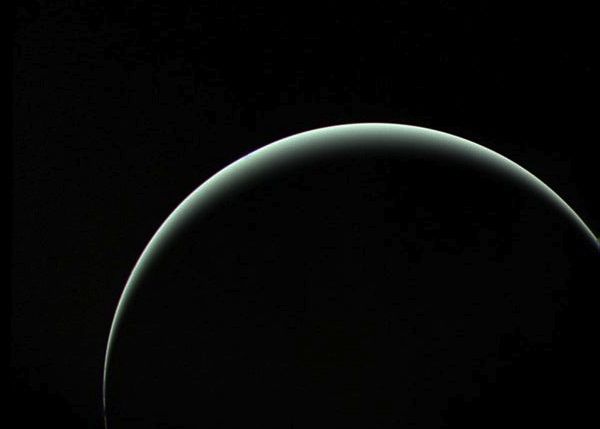
Voyager passed by Uranus and used it’s gravity to fling it towards Neptune, it’s final destination in this solar system. To date Uranus has not been visited again by a human spacecraft, many of it’s secrets are yet to be discovered or solved.

Also find Planet Simon on Twitter
Come and visit find me on my Planet Simon Facebook Page
Find some of my pictures on Instagram
Also look me up on: Pinterest Stumbledupon Wattpad

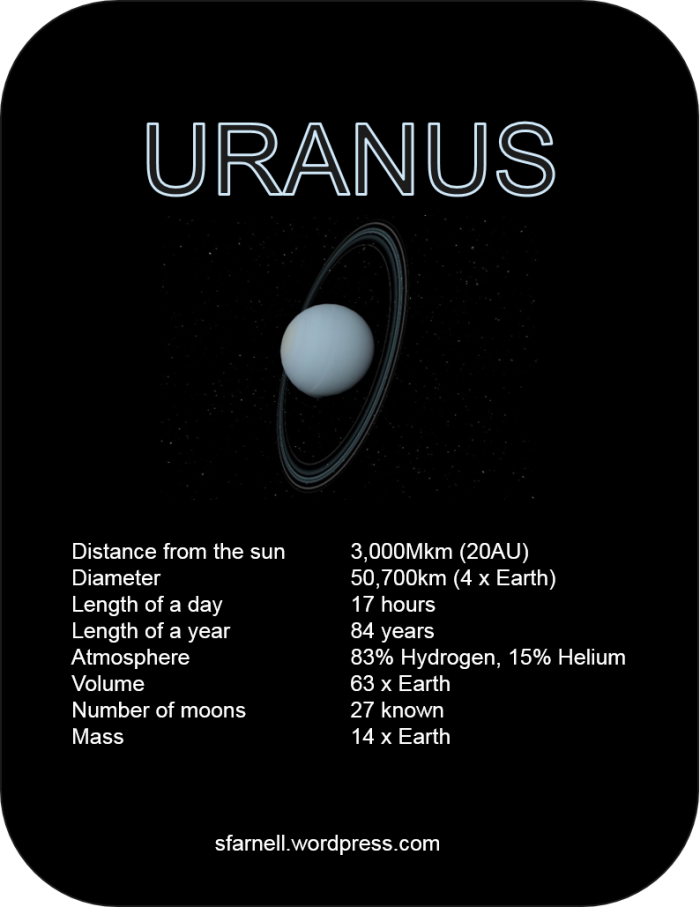
So much wonder. What are we doing on this world, fighting and thieving from each other when the Solar System beckons?
LikeLiked by 1 person
Yup… This is it.
LikeLiked by 1 person
So interesting! It blows my mind and love the photography, stats & explanations. What are the Rings made up of? Is it just debris caught up in the atmosphere?
LikeLike
Very interesting post!Wonderful work! Love it!
LikeLiked by 1 person
Thanks Emily, a lot of work goes into them so I appreciate that ☺
LikeLiked by 1 person
Umbriel is a wicked name love that. Very interesting post full of stuff I didn’t know 🙂
LikeLiked by 1 person
There are some folks names there. What else was new to you?
LikeLiked by 1 person
The stats and figures. I love the name Oberon too – Shakespeare is a legend!
LikeLiked by 1 person
I know, I never really realised that up until now, each planet is about twice as far from the sun as the other.
He is a legend, just ahead of his time.
LikeLiked by 1 person
As a teenager, solar system had always bewitched me. But then life happened and I got busy in other things.
I am glad Simon that through your blog, I can again relive my teen interest. 😀 🙂
LikeLiked by 1 person
Hi ya, that’s good to know. It’s not done yet and there’s the others to catch up on. But it’s great I’ve been able to ignite that teen interest again. ☺
LikeLiked by 1 person
Hehe yes..Waiting for more!😃😃
LikeLiked by 1 person
It’s coming soon! ☺☺☺
LikeLiked by 1 person
Excited!😍
LikeLiked by 1 person
Good! ☺☺☺
LikeLiked by 1 person
Nominated you for a blogger award, you can find the post here: https://lushtivity.net/2016/08/27/blogger-recognition-award-2/ 🙂
LikeLiked by 1 person
Thank you so much Lise… Thank you. I will take part as soon as I can 💋💋
LikeLiked by 1 person
To stand on Neptune.
Oh Man!
Thanks for the visit Simon.
LikeLiked by 1 person
Well, sink into it….
LikeLiked by 1 person
I’d have one of those fancy suits that can withstand impossible pressures.
(Man, imagine being on the core of Jupiter- but I guess that’s all we’ll be able to do, well for the next few centuries)
LikeLiked by 1 person
It would be cool, but I want a way to get out lol
LikeLiked by 1 person
Yeah, that’s that to it.
Ah well back to my After-Life Fly-Around the Solar-System Application Form (only another 145 pages to go)
LikeLiked by 1 person
I thought it would be a short form?
LikeLiked by 1 person
It’s designed that way, just to remind you how much of a twit you were, when you should not have been. The marks don’t go against you, it just stops you boasting about the few times you got it right.
(As a civil servant I can’t help but admire the crafting)
LikeLiked by 1 person
This is a good thing for us all! 😝
LikeLiked by 1 person
This is great, thanks for sharing! I’ve always been enchanted by the outer planets, with their herds of imaginatively-named moons…
LikeLiked by 1 person
We’ll they had to be as there so many of them! Lol
LikeLiked by 1 person
Ha! True 😀
LikeLiked by 1 person
Wow, so one Uranus year would be more or less a human lifetime. Now that makes me think…
LikeLiked by 2 people
Doesn’t it just? ☺
LikeLiked by 1 person
For me, there is something extra magical about Uranus, probably because of the moons all having Shakespearean names. Really sets it apart from all the other planets.
LikeLiked by 1 person
That’s true, in that sense it’s very different. As I detail, it’s different in so many other ways.
LikeLiked by 1 person